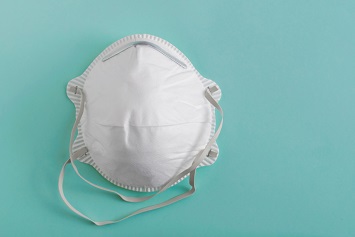On June 28, the Occupational Safety and Health Administration (OSHA) issued an enforcement directive for its COVID-19 emergency temporary standard (ETS), which only applies to healthcare and healthcare support services employers.
The directive includes exemptions from inspection and enforcement under the ETS for a number of tasks and facilities, such as:
- Provision of first aid by an employee who is not a licensed healthcare provider.
- Dispensing of prescriptions by pharmacists in retail settings.
- Nonhospital ambulatory care settings where all nonemployees are screened before entry and those suspected or confirmed to have COVID-19 are not permitted to enter the facility.
- Well-defined hospital ambulatory care settings where all employees are fully vaccinated and all nonemployees are screened before entry and those suspected or confirmed to have COVID-19 are not permitted to enter the facility.
- Home healthcare settings where all employees are fully vaccinated and all nonemployees are screened and those suspected or confirmed to have COVID-19 are not present.
- Healthcare support services not performed in a healthcare setting where direct patient care occurs, such as an off-site laundry or off-site medical billing facility.
- Telehealth services are provided outside of a setting where direct patient care occurs.
The new directive provides OSHA compliance safety and health officers (CSHOs) with guidance and procedures for enforcing the standard’s requirements, including those for written COVID-19 prevention plans, patient and nonemployee screening and management, employee health screening and medical management, precautions for aerosol-generating procedures, personal protective equipment (PPE), physical distancing and physical barriers, vaccination and training, cleaning and disinfection, antiretaliation, and recordkeeping and reporting, as well as the requirement to provide COVID-19 protections at no cost to employees.
The directive contains specifications and references for airborne infection isolation rooms (AIIRs), guidance on respiratory protection by workplace activity and OSHA standards, and guidance for determining medical removal benefits. The ETS requires employers to continue to provide regular pay and benefits to employees who are removed, working remotely, or in isolation due to a confirmed or suspected COVID-19 infection.
The ETS became effective June 21, and employers must comply with most of the standard’s provisions by July 6 and with the physical barrier, training, and ventilation provisions by July 21.
NJ Healthcare Provider Cited for COVID-19 Exposures
On June 30, OSHA announced it had cited Oaks Integrated Care Inc. of Mount Holly, New Jersey, for serious violations of the respiratory protection program standard and the General Duty Clause of the Occupational Safety and Health Act after two workers at separate group home facilities suffered exposure and later died from the coronavirus. The agency is seeking proposed penalties totaling $27,306.
The agency determined that Oaks Integrated Care did not develop and implement timely and effective measures to mitigate the spread of the virus following outbreaks at its Bock Bay group home in Howell and the Pat LeBon Center in Lumberton.
The company failed to identify and isolate clients residing in its group homes suspected of having the coronavirus and did not adequately inform staff who worked with these clients about the associated risks, according to the agency.
OSHA also found that the company failed to:
- Develop and implement a respiratory protection program.
- Provide National Institute for Occupational Safety and Health (NIOSH)-certified respirators to employees who provided care to confirmed coronavirus-positive clients.
- Provide workers with fit tests or medical evaluations to ensure effective use of the required respirators.
- Provide effective training in the use, cleaning, and storage of a respirator.

